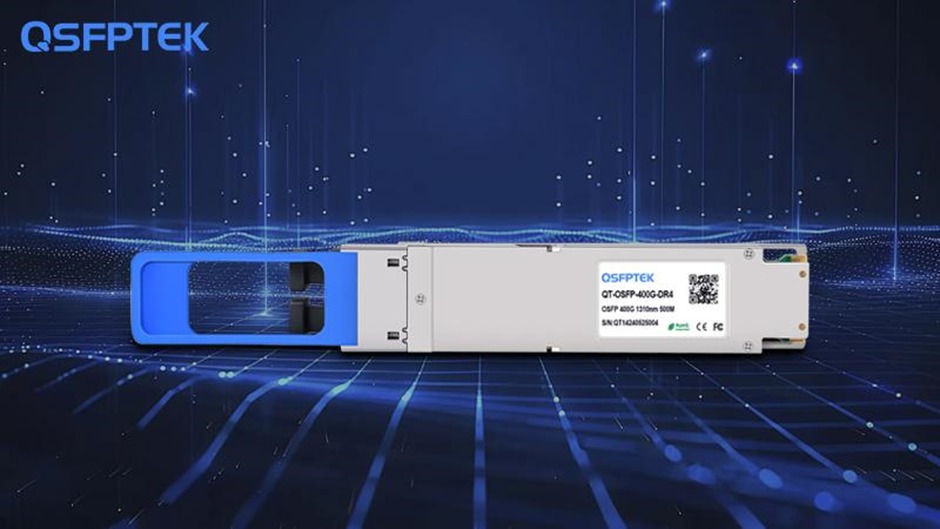The exponential growth in data and the need for high-speed processing have driven significant advancements in data center technology. Among these advancements, 400G OSFP (Octal Small Form Factor Pluggable) optical transceivers stand out, offering unprecedented bandwidth and performance. As data centers evolve to handle more complex and data-intensive tasks, the adoption of 400G OSFP modules is becoming increasingly essential. This article explores the applications of 400G OSFP in data centers, highlighting its role in enhancing data center interconnects, supporting high-density networking, improving scalability and flexibility, reducing latency and increasing throughput, enabling advanced applications, and ensuring energy efficiency and cost-effectiveness.
Enhancing Data Center Interconnects (DCI)
Data Center Interconnect (DCI) refers to the networking infrastructure connecting multiple data centers, enabling seamless collaboration. With the rising demand for data replication, backup, and disaster recovery across geographically dispersed locations, the need for high-bandwidth DCI solutions has never been greater. 400G OSFP modules provide a robust answer by delivering significantly higher data rates, facilitating faster and more reliable interconnections between data centers.
For instance, companies that require real-time data synchronization between multiple sites benefit from the increased bandwidth and reduced latency offered by 400G OSFP. This is critical for applications such as financial transactions, where even a millisecond delay can have substantial consequences. By leveraging 400G OSFP, organizations can ensure their DCI infrastructure can handle growing data loads while maintaining optimal performance and reliability.
Supporting High-Density Networking
As data centers strive to maximize space efficiency and accommodate more servers and networking equipment, high-density networking becomes crucial. High-density networking involves packing more ports and connections into a limited physical space without compromising performance. 400G OSFP modules excel in this regard, offering higher port density compared to previous-generation transceivers.
By utilizing 400G OSFP, data centers achieve greater port density, reducing the physical footprint of networking equipment. This allows for more efficient use of rack space, a valuable commodity in modern data centers. Additionally, the higher port density provided by 400G OSFP enables data centers to scale their networks more easily, accommodating future growth and technological advancements without requiring extensive physical upgrades.
Improving Scalability and Flexibility
Scalability and flexibility are essential attributes for modern data centers, which must adapt to changing workloads and evolving technological landscapes. 400G OSFP modules offer significant advantages in scalability and flexibility. Their modular design allows for easy upgrades and expansions, enabling data centers to scale their networks in response to increasing demand.
For example, a data center experiencing a sudden surge in traffic due to a new application launch can quickly upgrade its network infrastructure by deploying additional 400G OSFP modules. This modularity also facilitates easier maintenance and replacement, minimizing downtime and ensuring continuous operation. Furthermore, the ability to mix and match different transceiver types within the same infrastructure provides data centers with the flexibility to tailor their networks to specific requirements, optimizing performance and cost-efficiency.
Reducing Latency and Increasing Throughput
Low latency and high throughput are critical for data centers, particularly those that support latency-sensitive applications such as real-time analytics, video streaming, and online gaming. 400G OSFP modules are designed to minimize latency and maximize throughput, ensuring data is transmitted quickly and efficiently.
By leveraging advanced modulation techniques and high-speed components, 400G OSFP transceivers achieve significantly lower latency compared to older technologies. This is especially beneficial for data centers that handle large volumes of data and require rapid processing times. In high-frequency trading environments, where decisions are made in microseconds, the reduced latency provided by 400G OSFP can lead to substantial competitive advantages. Additionally, the increased throughput capability of these transceivers ensures data centers can handle more simultaneous connections and higher data rates, improving overall network performance.
Enabling Advanced Applications and Services
The rise of advanced applications and services such as artificial intelligence (AI), machine learning (ML), and big data analytics has placed additional demands on data center infrastructure. These applications require massive amounts of data to be processed and transmitted at high speeds, necessitating the use of advanced networking solutions like 400G OSFP.
For AI data center and ML workloads, which often involve processing large datasets in real-time, the high bandwidth and low latency of 400G OSFP are invaluable. These transceivers enable data centers to support the intensive computational requirements of AI and ML algorithms, facilitating faster training times and more accurate predictions. Similarly, for big data analytics, the ability to quickly transfer and process vast amounts of data is crucial for deriving actionable insights. By deploying 400G OSFP, data centers can meet the demands of these advanced applications, ensuring they remain at the forefront of technological innovation.
Conclusion
400G OSFP optical transceivers represent a significant leap forward in data center technology, offering unparalleled performance and efficiency. By enhancing data center interconnects, supporting high-density networking, improving scalability and flexibility, reducing latency and increasing throughput, enabling advanced applications, 400G OSFP modules are set to become a cornerstone of modern data center infrastructure. As technology advances, the adoption of 400G OSFP will play a crucial role in enabling data centers to meet the challenges of an increasingly data-driven world, ensuring they remain at the cutting edge of innovation and performance.







